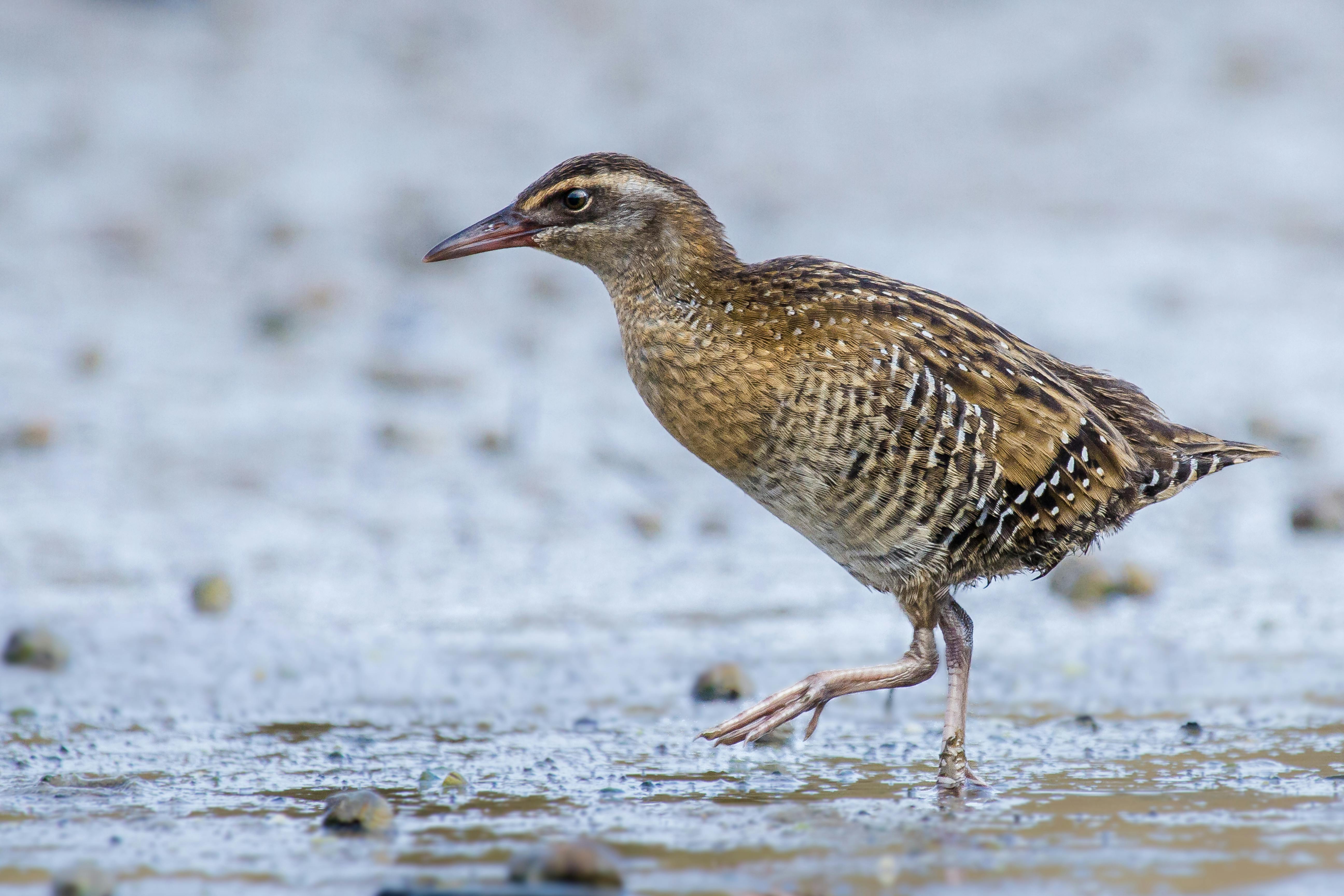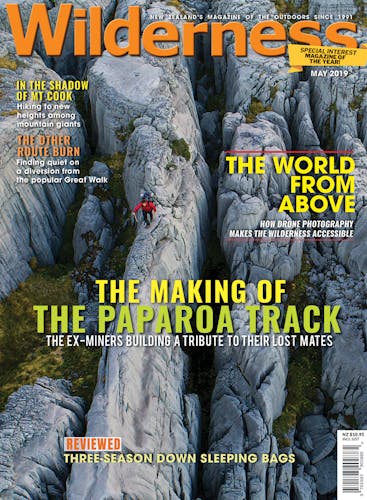The banded rail is a rarely-seen secretive and shy estuary and wetland bird. It is well-camouflaged and remains under the cover of vegetation, only venturing a few metres into the open to feed early in the morning or late in the evening.
Conservation status
Native and declining.
Features
Banded rail/moho-pererū is a medium-sized bird of the rail family. In profile, it is very similar to weka but less than half the size and weight (30cm long and 170g). Even the colouring is alike, although the banded rail has more complex and detailed brown (and off-white) markings. The banding referred to in its name comes from a broad buff-orange band lying across the breast. Young birds are duller in colour with a dark bill and legs as opposed to the reddish-brown bill and pinkish-brown legs of an adult.
Call
Moho-pererū have an alarm call which is a staccato cackling sound and a ‘swit’ contact call both of which are usually only heard in the early morning and evening.
Bird spotting tip
A good approach to see banded rail is to walk estuary mudflats along the edges of reeds and rushes looking for footprints that resemble that of weka but are much smaller. Once found, go back to that area early in the morning or late in the evening and simply sit, wait and watch. Chances are they will appear to forage.
Nesting
The breeding season lies between September and March. The nests are a rough platform made of rush and reed fragments, most often in rush thickets between 10cm and 50cm above ground or water.
Diet
Banded rails consume snails, crabs, insects, worms and spiders but will also feed on dead fish, seeds and fruit. The majority of their feeding takes place in the morning and evening and along the water’s edge as the tide recedes.
Feathery fact
Banded rail are reluctant but strong flyers. They can travel considerable distances, mainly at night. Occasionally they will appear far from their normal breeding range with most of these observations being juveniles moving about in autumn.








